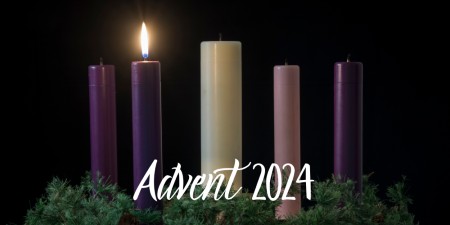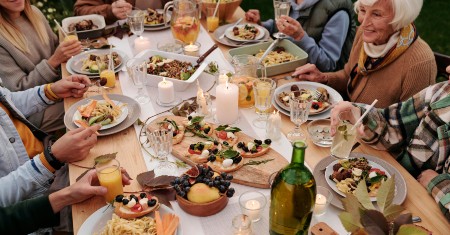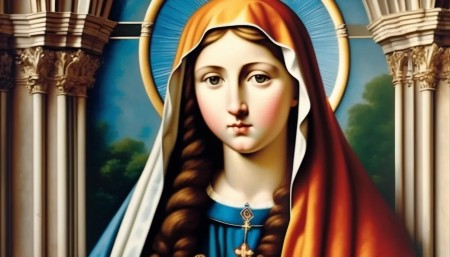 Dear readers, Catholic Online was de-platformed by Shopify for our pro-life beliefs. They shut down our Catholic Online, Catholic Online School, Prayer Candles, and Catholic Online Learning Resources—essential faith tools serving over 1.4 million students and millions of families worldwide. Our founders, now in their 70's, just gave their entire life savings to protect this mission. But fewer than 2% of readers donate. If everyone gave just $5, the cost of a coffee, we could rebuild stronger and keep Catholic education free for all. Stand with us in faith. Thank you. Help Now >
Dear readers, Catholic Online was de-platformed by Shopify for our pro-life beliefs. They shut down our Catholic Online, Catholic Online School, Prayer Candles, and Catholic Online Learning Resources—essential faith tools serving over 1.4 million students and millions of families worldwide. Our founders, now in their 70's, just gave their entire life savings to protect this mission. But fewer than 2% of readers donate. If everyone gave just $5, the cost of a coffee, we could rebuild stronger and keep Catholic education free for all. Stand with us in faith. Thank you. Help Now >
Rococo Style
FREE Catholic Classes
This style received its name in the nineteenth century from French émigrés , who used the word to designate in whimsical fashion the old shellwork style ( style rocaille ), then regarded as Old Frankish, as opposed to the succeeding more simple styles. Essentially, it is in the same kind of art and decoration as flourished in France during the regency following Louis XIV's death, and remained in fashion for about forty years (1715-50). It might be termed the climax or degeneration of the Baroque, which, coupled with French grace, began towards the end of the reign of Louis XIV to convert grotesques into curves, lines, and bands (Jean Bérain, 1638-1711). As its effect was less pronounced on architectural construction than elsewhere, it is not so much a real style as a new kind of decoration, which culminates in the resolution of architectural forms of the interiors (pilasters and architraves) by arbitrary ornamentation after the fashion of an unregulated, enervated Baroque, while also influencing the arrangement of space, the construction of the façades, the portals, the forms of the doors and windows. The Rococo style was readily received in Germany, where it was still further perverted into the arbitrary, unsymmetrical, and unnatural, and remained in favour until 1770 (or even longer); it found no welcome in England. In Italy a tendency towards the Rococo style is evidenced by the Borrominik Guarini, and others. The French themselves speak only of the Style Régence and Louis XV , which, however, is by no means confined to this one tendency.
To a race grown effeminate to the Baroque forms seemed too coarse and heavy, the lines too straight and stiff, and whole impression to weighty and forced. The small and the light, sweeps and flourishes, caught the public taste; in the interiors the architectonic had to yield to the picturesque, the curious, an the whimsical. There develops a style for elegant parlours, dainty sitting-rooms and boudoirs, drawing-rooms and libraries, in which walls, ceiling, furniture, and works of metal and porcelain present one ensemble of sportive, fantastic, and sculptured forms. The horizontal lines are almost completely superseded by curves and interruptions, the vertical varied at least by knots; everywhere shell-like curves appear to a cusp; the natural construction of the walls is concealed behind thick stucco-framework; on the ceiling perhaps a glimpse of Olympus enchants the view--all executed in a beautiful white or in bright colour tones. All the simple laws and rules being set aside in favour of free and enchanting imaginativeness, the fancy received all the greater incentive to activity, and the senses were the more keenly requisitioned. Everything vigorous is banned, every suggestion of earnestness; nothing disturbs the shallow repose of distinguished banality; the sportively graceful and light appears side by side with the elegant and the ingenious. The sculptor Bouchardon represented Cupid engaged in carving his darts of love from the club of Hercules; this serves as an excellent symbol of the Rococo style --the demigod is transformed into the soft child, the bone-shattering club becomes the heart-scathing arrows, just as marble is so freely replaced by stucco. Effeminacy, softness, and caprice attitudinize before us. In this connection, the French sculptors, Robert le Lorrain, Michel Clodion, and Pigalle may be mentioned in passing. For small plastic figures of gypsum, clay, biscuit, porcelain (Sèvres, Meissen ), the gay Rococo is not unsuitable; in wood, iron, and royal metal, it has created some valuable works. However, confessionals, pulpits, altars, and even façades lead ever more into the territory of the architectonic, which does not easily combine with the curves of Rococo, the light and the petty, with forms whose whence and wherefore baffle inquiry. Even as mere decoration on the walls of the interiors the new forms could maintain their ground only for a few decades. In France the sway of the Rococo practically ceases with Oppenord (d. 1742) and Meissonier (d. 1750). Inaugurated in some rooms in the Palace of Versailles, it unfolds its magnificence in several Parisian buildings (especially the Hôtel Soubise). In Germany French and German artists (Cuvilliés, Neumann, Knobelesdorff, etc.) effected the dignified equipment of the Amalienburg near Munich, and the castles of Wurzburg, Potsdam, Charlottenburg, Brühl, Bruchsal, Schönbrunn, etc. In France the style remained somewhat more reserved, since the ornaments were mostly of wood, or, after the fashion of wood-carving, less robust and naturalistic and less exuberant in the mixture of natural with artificial forms of all kinds (e.g. plant motives, stalactitic representations, grotesques, masks, implements of various professions, badges, paintings, precious stones). As elements of the beautiful France retained, to a greater extent than Germany, the unity of the whole scheme of decoration and the symmetry of its parts.
This style needs not only decorators, goldsmiths, and other technicians, but also painters. The French painters of this period reflect most truly the moral depression dating from the time of Louis XIV, even the most deliberated among them confining themselves to social portraits of high society and depicting " gallant festivals", with their informal frivolous, theatrically or modishly garbed society. The "beautiful sensuality" is effected by masterly technique, especially in the colouring, and to a great extent by quite immoral licenses or mythological nudities as in loose or indelicate romances. As for Watteau (1682-1721), the very titles of his works--e.g. Conversation, Breakfast in the Open Air, Rural Pleasures, Italian or French Comedians, Embarkment for the Island of Cythera--indicate the spirit and tendency of his art. Add thereto the figures in fashionable costume slim in head, throat, and feet, in unaffected pose, represented amid enchanting, rural scenery, painted in the finest colours, and we have a picture of the high society of the period which beheld Louis XV and the Pompadour. François Boucher (1703-770) is the most celebrated painter of ripe Rococo.
For the church Rococo may be, generally speaking, compared with worldly church music. It lacks of simplicity, earnestness, and repose is evident, while its obtrusive artificiality, unnaturalness, and triviality have a distracting effect. Its softness and prettiness likewise do not become the house of God. However, shorn of its most grievous outgrowths, it may have been less distracting during its proper epoch, since it then harmonized with the spirit of the age. A development of Baroque, it will be found a congruous decoration for baroque churches. In general it makes a vast difference whether the style is used with moderation in the finer and more ingenious form of the French masters, or is carried to extremes with the consistency of the German. The French artists seem ever to have regarded the beauty of the whole composition as the chief object, while the German laid most stress on the bold vigour of the lines; thus, the lack of symmetry was never so exaggerated in the works of the former. In the church Rococo may at times have the charm of prettiness and may please by its ingenious technic, provided the objects be small and subordinate a credence table with cruets and plate, a vase, a choir desk, lamps, key and lock, railings or balustrade, do not too boldly challenge the eye, and fulfil (sic) all the requirements of mere beauty of form. Rococo is indeed really empty, solely a pleasing play of the fancy. In the sacristy (for presses etc.) and ante chambers it is more suitable than in the church itself--at least so far as its employment in conspicuous places is concerned.
The Rococo style accords very ill with the solemn office of the monstrance, the tabernacle, and the altar, and even of the pulpit. The naturalism of certain Belgian pulpits, in spite or perhaps on account of their artistic character, has the same effect as have outspoken Rococo creations. The purpose of the confessional and the baptistery would also seem to demand more earnest forms. In the case of the larger objects, the sculpture of Rococo forms either seems pretty, or, if this prettiness be avoided, resembles Baroque. The phantasies of this style agree ill with the lofty and broad walls of the church. However, everything must be decided according to the object and circumstances; the stalls in the cathedral of Mainz elicit not only our approval but also our admiration, while the celebrated privilege d altar of Vierzehnheiligen repels us both by its forms and its plastic decoration. Thee are certain Rococo chalices (like that at the monastery of Einsiedeln which are, as one might say, decked out in choice festive array; there are others, which are more or less misshapen owing to their bulging curves or figures. Chandeliers and lamps may also be disfigured by obtrusive shellwork or want of all symmetry, or may amid great decorativeness be kept within reasonable limits. The material and technic are also of consequence in Rococo. Woven materials, wood-carvings, and works in plaster of Paris are evidently less obtrusive than works in other materials, when they employ the sportive Rococo. Iron (especially in railings) and bronze lose their coldness and hardness, when animated by the Rococo style; in the case of the latter, gilding may be used with advantage. Gilding and painting belong to the regular means through which this style, under certain circumstances, enchants the eye and fancy. All things considered, we may say of the Rococo style--as has not unreasonably been said of the Baroque and of the Renaissance --that it is very apt to introduce a worldly spirit into the church, even if we overlook the figural accessories, which are frequently in no way conducive to sentiments of devotion, and are incompatible with the sobriety and greatness of the architecture and with the seriousness of sacred functions.
Join the Movement
When you sign up below, you don't just join an email list - you're joining an entire movement for Free world class Catholic education.
-

-
Mysteries of the Rosary
-
St. Faustina Kowalska
-
Litany of the Blessed Virgin Mary
-
Saint of the Day for Wednesday, Oct 4th, 2023
-
Popular Saints
-
St. Francis of Assisi
-
Bible
-
Female / Women Saints
-
7 Morning Prayers you need to get your day started with God
-
Litany of the Blessed Virgin Mary
Daily Catholic
 Daily Readings for Wednesday, November 27, 2024
Daily Readings for Wednesday, November 27, 2024 St. James Intercisus: Saint of the Day for Wednesday, November 27, 2024
St. James Intercisus: Saint of the Day for Wednesday, November 27, 2024 Prayer to Saint Anthony of Padua: Prayer of the Day for Wednesday, November 27, 2024
Prayer to Saint Anthony of Padua: Prayer of the Day for Wednesday, November 27, 2024- Daily Readings for Tuesday, November 26, 2024
- St. John Berchmans: Saint of the Day for Tuesday, November 26, 2024
- Act of Entrustment to Mary: Prayer of the Day for Tuesday, November 26, 2024
![]()
Copyright 2024 Catholic Online. All materials contained on this site, whether written, audible or visual are the exclusive property of Catholic Online and are protected under U.S. and International copyright laws, © Copyright 2024 Catholic Online. Any unauthorized use, without prior written consent of Catholic Online is strictly forbidden and prohibited.
Catholic Online is a Project of Your Catholic Voice Foundation, a Not-for-Profit Corporation. Your Catholic Voice Foundation has been granted a recognition of tax exemption under Section 501(c)(3) of the Internal Revenue Code. Federal Tax Identification Number: 81-0596847. Your gift is tax-deductible as allowed by law.








 Daily Readings for Wednesday, November 27, 2024
Daily Readings for Wednesday, November 27, 2024 St. James Intercisus: Saint of the Day for Wednesday, November 27, 2024
St. James Intercisus: Saint of the Day for Wednesday, November 27, 2024 Prayer to Saint Anthony of Padua: Prayer of the Day for Wednesday, November 27, 2024
Prayer to Saint Anthony of Padua: Prayer of the Day for Wednesday, November 27, 2024

